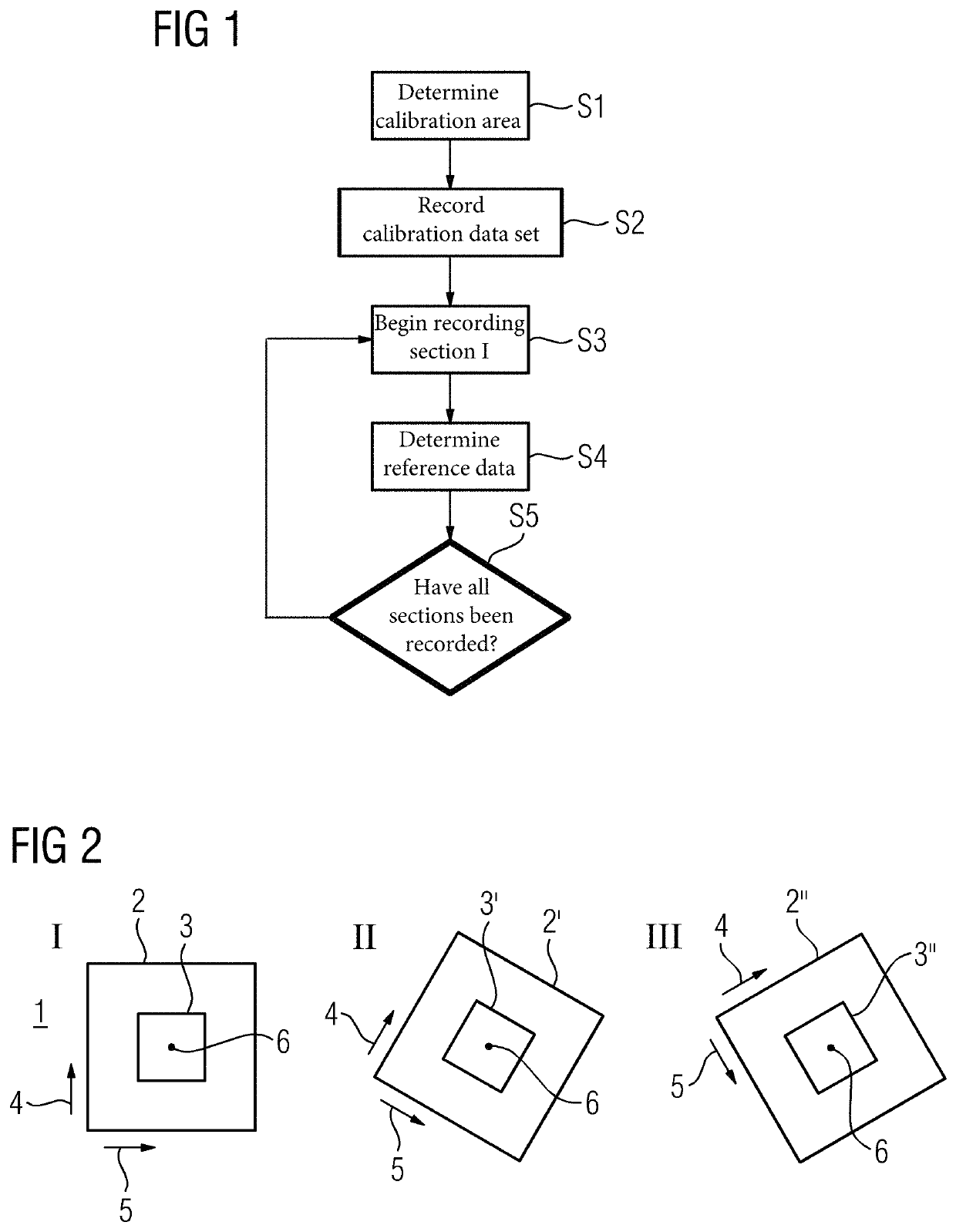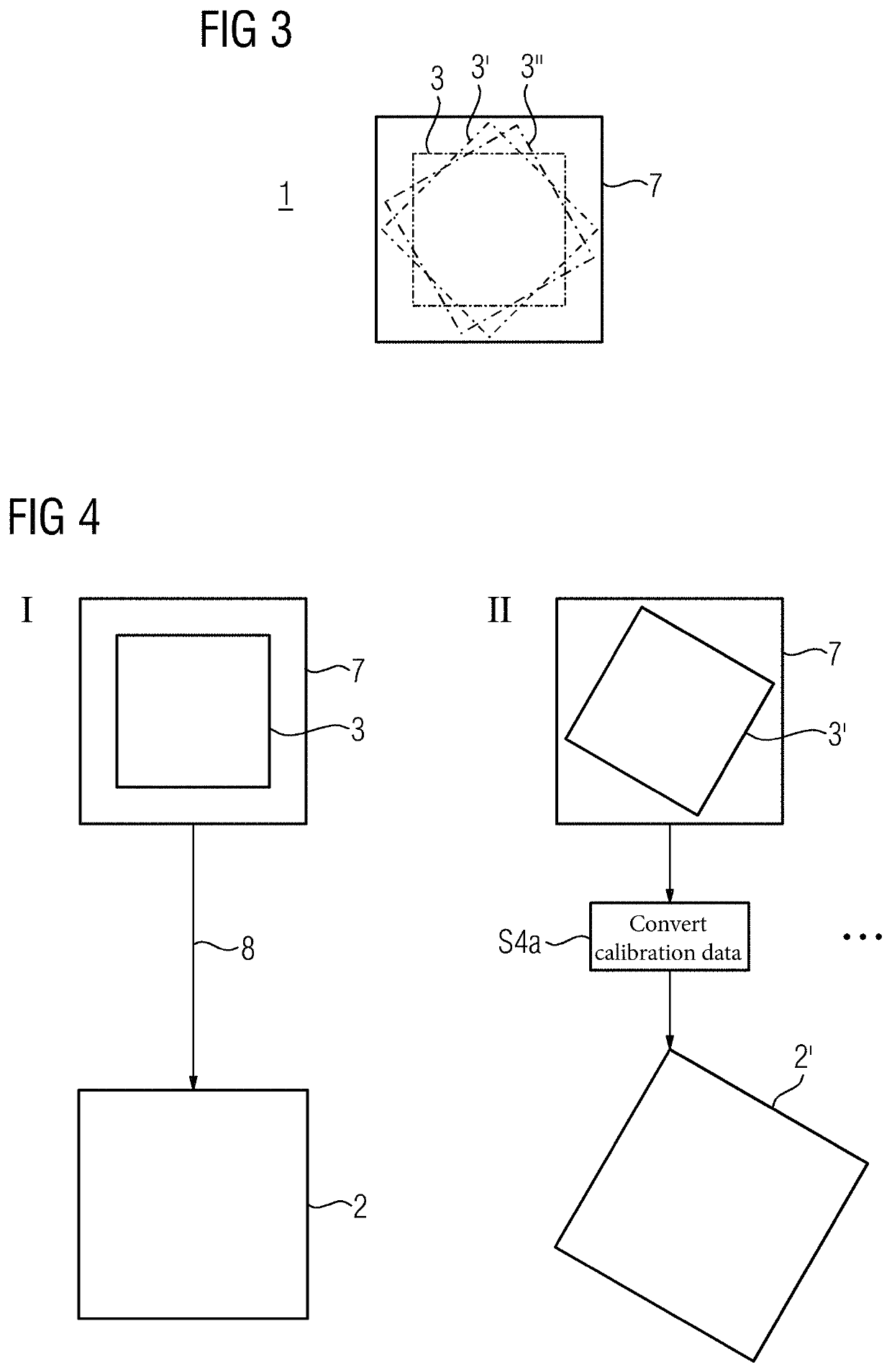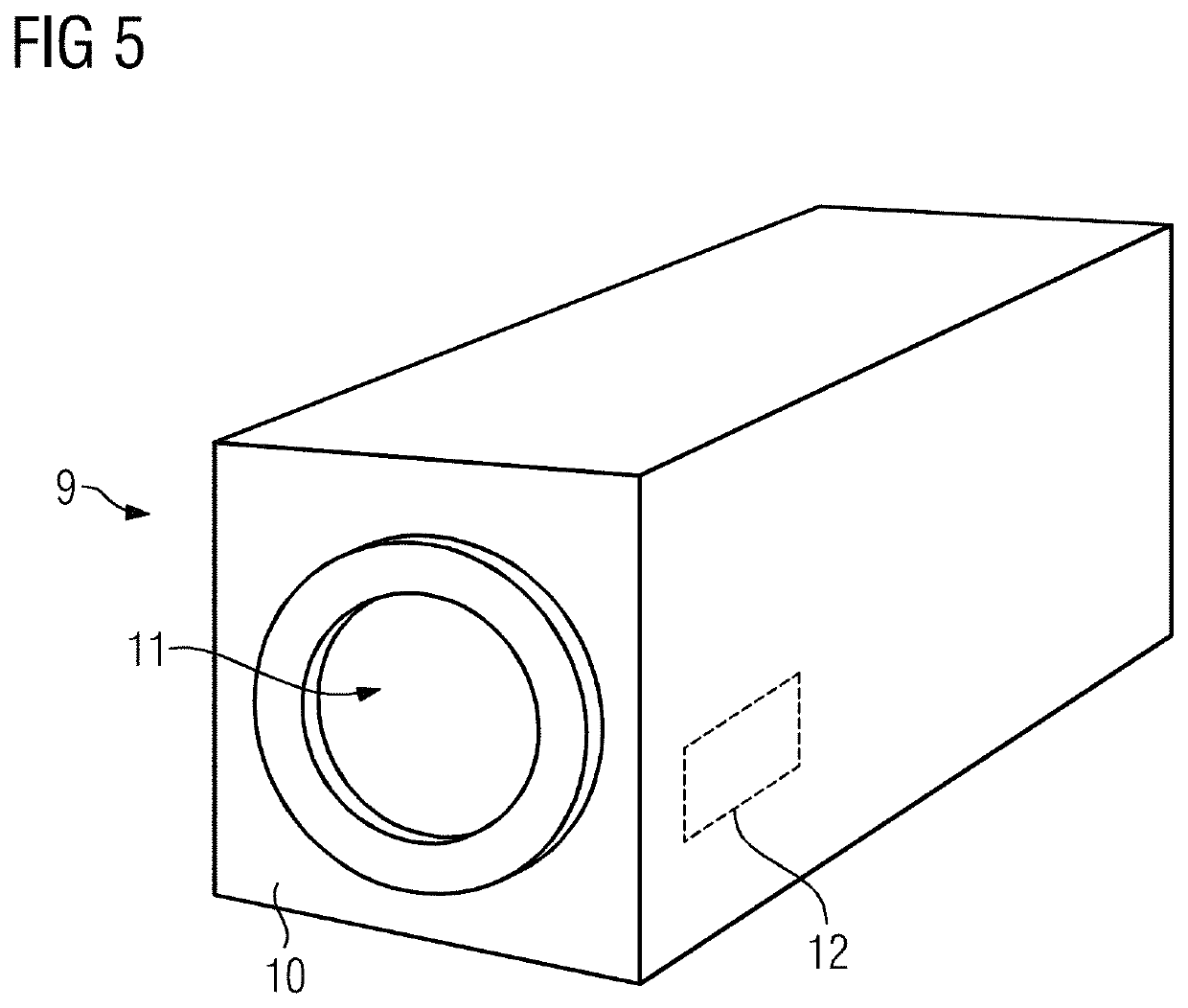Magnetic resonance apparatus and method that combine data acquisition techniques wherein cartesian scanning of k-space is changed, with accelerated imaging techniques requiring reference data
a data acquisition and data acquisition technology, applied in the field of magnetic resonance apparatus and method that combine data acquisition techniques wherein cartesian scanning of kspace is changed, with accelerated imaging techniques requiring reference data, can solve the problems of increasing sar burden, affecting image quality, and involving significant amount of time, so as to achieve accelerated recording and improve image quality
- Summary
- Abstract
- Description
- Claims
- Application Information
AI Technical Summary
Benefits of technology
Problems solved by technology
Method used
Image
Examples
Embodiment Construction
[0025]FIG. 1 shows a flowchart of an exemplary embodiment of the method according to the invention. In the present case, a PROPELLER technique is used as a recording technique and is combined with at least one accelerating imaging technique, which can be parallel imaging technique (PAT) and / or a multi-slice imaging technique (SMS), for example. Reference data are required for the accelerating imaging techniques, which should be from a relevant reference range with correct scanning according to the current rotation of the coordinate system of k-space in the corresponding recording section. In order to achieve this without reference measurements having to be measured within or in addition to the recording of magnetic resonance data in the individual recording sections themselves, in step S1, in the present case before the beginning of the recording of the magnetic resonance data, a calibration area is determined, In step S2, a calibration data set is recorded for this calibration area...
PUM
 Login to View More
Login to View More Abstract
Description
Claims
Application Information
 Login to View More
Login to View More - R&D
- Intellectual Property
- Life Sciences
- Materials
- Tech Scout
- Unparalleled Data Quality
- Higher Quality Content
- 60% Fewer Hallucinations
Browse by: Latest US Patents, China's latest patents, Technical Efficacy Thesaurus, Application Domain, Technology Topic, Popular Technical Reports.
© 2025 PatSnap. All rights reserved.Legal|Privacy policy|Modern Slavery Act Transparency Statement|Sitemap|About US| Contact US: help@patsnap.com



